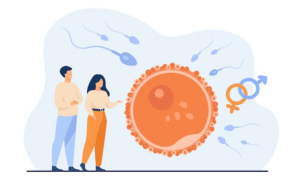Introduction
Azoospermia Management Guidelines
Azoospermia is a medical condition characterized by the complete absence of sperm in the semen, making it one of the leading causes of male infertility. It affects approximately 1% of men and 10-15% of men with infertility. The condition is classified into two major categories: obstructive azoospermia (OA) and non-obstructive azoospermia (NOA). Managing azoospermia involves understanding its causes, diagnosing the type, and applying appropriate treatment strategies. This article explores guidelines for managing azoospermia, including diagnostic techniques, treatment options, and emerging therapies.
What is Azoospermia?
Azoospermia refers to the complete absence of sperm in a man’s ejaculate. For normal fertility, sperm must be present in the semen; therefore, the absence of sperm can lead to infertility. The condition is categorized into two types based on its cause:
- Obstructive Azoospermia (OA): This occurs when there is a blockage in the male reproductive tract, preventing sperm from being released in the semen.
- Non-Obstructive Azoospermia (NOA): This occurs due to testicular dysfunction, where sperm production is impaired, even though the reproductive tract is not obstructed.
Diagnosing Azoospermia
Accurate diagnosis is the first step in managing azoospermia. A semen analysis is the primary test used to detect azoospermia. If no sperm are found, further diagnostic steps are required to identify the underlying cause.
Medical History Review
A comprehensive review of the patient’s medical history, including past surgeries, infections, lifestyle factors, and genetic disorders, provides essential clues.
Scrotal Ultrasound
Azoospermia Management Guidelines, This imaging technique helps identify structural issues in the testicles or reproductive tract, such as varicocele or the absence of the vas deferens.
Hormonal Testing
Hormonal imbalances, like low testosterone levels, can cause azoospermia. Testing for hormones such as FSH (follicle-stimulating hormone), LH (luteinizing hormone), and testosterone is crucial.
Genetic Testing
For non-obstructive azoospermia, genetic testing can detect conditions like Klinefelter syndrome or Y-chromosome microdeletions, contributing to sperm production issues.
Testicular Biopsy
In some cases, a testicular biopsy evaluates the presence of sperm within the testes, especially for non-obstructive azoospermia.
Management Guidelines for Azoospermia
Once the type and cause of azoospermia are identified, the treatment approach is tailored accordingly. The primary treatment options for azoospermia are outlined below. Azoospermia Management Guidelines
1. Obstructive Azoospermia (OA)
Obstructive azoospermia is typically treatable through surgical intervention. In this case, sperm production is normal, but a blockage in the reproductive tract prevents sperm from reaching the semen.
Treatment Options for OA:
- Vasectomy Reversal: If azoospermia results from a vasectomy, a microsurgical vasectomy reversal reconnects the vas deferens, allowing sperm passage.
- Microsurgical Epididymal Sperm Aspiration (MESA): When vasectomy reversal is not possible, MESA retrieves sperm directly from the epididymis.
- Testicular Sperm Extraction (TESE): In some cases, TESE extracts sperm directly from the testes when epididymal retrieval is not viable.
- In-Vitro Fertilization (IVF) and Intracytoplasmic Sperm Injection (ICSI): Post-sperm retrieval, IVF with ICSI involves injecting a single sperm directly into an egg for fertilization.
2. Non-Obstructive Azoospermia (NOA)
Non-obstructive azoospermia is more challenging to manage due to impaired sperm production in the testes. Treatment focuses on enhancing sperm production or retrieving sperm for assisted reproduction.
Treatment Options for NOA:
- Hormonal Therapy: Hormonal imbalances may be treated with medications like clomiphene citrate or hCG (human chorionic gonadotropin) to stimulate sperm production.
- Testicular Sperm Extraction (TESE) or Micro-TESE: TESE or micro-TESE retrieves viable sperm directly from the testes, even with minimal sperm production. Micro-TESE offers higher success rates by examining smaller testicular tissue samples under a microscope.
- Sperm Banking: Successful sperm retrieval allows for sperm banking to preserve sperm for future IVF procedures, especially if sperm production may diminish.
- Genetic Counseling: Since genetic factors play a significant role in NOA, genetic counseling is recommended. Pre-implantation genetic testing (PGT) can screen embryos for inherited conditions before implantation.
Advanced Assisted Reproductive Techniques (ART)
In cases of azoospermia, assisted reproductive techniques (ART) are crucial for achieving pregnancy. ART methods like IVF and ICSI have revolutionized infertility treatments.
- In-Vitro Fertilization (IVF) with ICSI: Post-sperm retrieval, IVF with ICSI offers the best chance for successful fertilization by injecting a single sperm directly into an egg.
- Donor Sperm: When no sperm is retrievable, donor sperm may be an option, enabling couples to pursue pregnancy with assisted reproductive technologies.
- Cryopreservation: Sperm cryopreservation stores sperm for future use, ensuring availability even if sperm production ceases later.
Emerging Treatments in Azoospermia Management
The field of azoospermia management is constantly evolving, with new treatments and technologies offering hope to those affected by male infertility.
- Stem Cell Therapy: Research into stem cells shows potential in regenerating damaged or non-functional testicular tissue, offering a solution for men with NOA who cannot produce sperm.
- Gene Therapy: For genetically determined cases of azoospermia, gene therapy may offer a long-term solution by correcting genetic mutations that prevent sperm production.
- Advanced Sperm Retrieval Techniques: New technologies in sperm retrieval, such as micro-TESE, are improving success rates even in cases with minimal sperm production.
Psychosocial Aspects of Azoospermia Management
Managing azoospermia involves addressing the emotional and psychological challenges accompanying infertility.
Psychological Support: Infertility can cause stress, anxiety, and depression. Counseling helps men and couples cope with the emotional burden of azoospermia.
Support Groups: Joining support groups provides a sense of community and allows individuals to share experiences with others facing similar challenges.
Couples Therapy: Infertility affects relationships, and couples therapy helps partners navigate emotional strain, maintaining a strong relationship during treatment.
Conclusion
Azoospermia can be a daunting diagnosis, but with proper management, many men can achieve fatherhood through various treatment options. Whether through surgical intervention for obstructive azoospermia or advanced assisted reproductive technologies for non-obstructive azoospermia, solutions are available. Emerging therapies, such as stem cell research and gene therapy, offer exciting possibilities for future treatment. It’s essential for men dealing with azoospermia to seek proper medical advice and explore all available management options.
Call to Action
If you or a loved one is dealing with azoospermia, consult a fertility specialist to explore the best treatment options available. Personalized care and treatment can help improve your chances of achieving reproductive goals.
FAQs
What is the difference between obstructive and non-obstructive azoospermia? Obstructive azoospermia is caused by blockages in the reproductive tract, while non-obstructive azoospermia occurs due to impaired sperm production in the testes.
Can azoospermia be cured? While azoospermia may not be fully “cured,” various treatment options can help men achieve fatherhood, including sperm retrieval and assisted reproductive technologies.
What are the latest advancements in azoospermia treatment? Emerging treatments like stem cell therapy, gene therapy, and advanced sperm retrieval techniques provide new hope for azoospermia patients.


